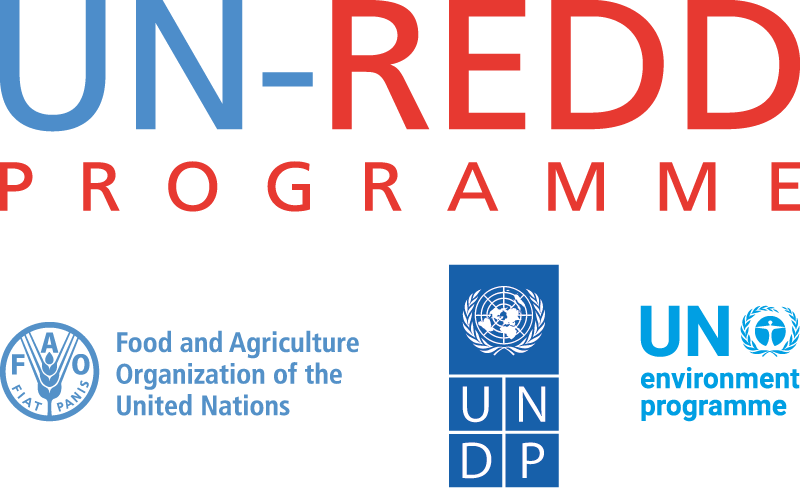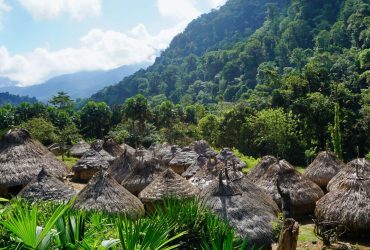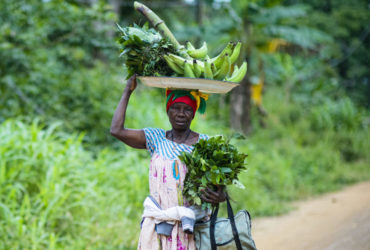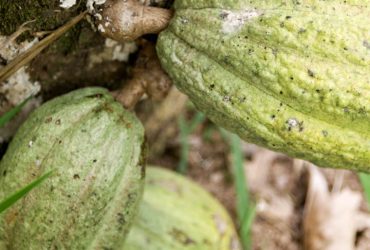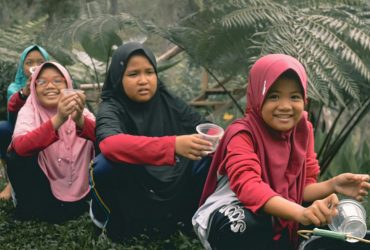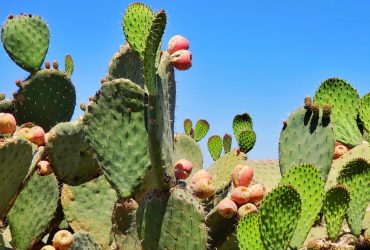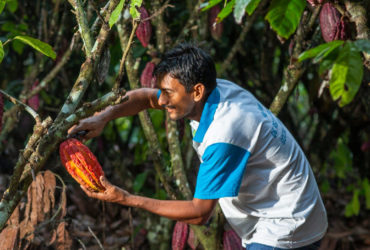PROGRESS AGAINST THE WARSAW FRAMEWORK
NS/AP: The National REDD+ Strategy has been developed, with the support of the UN-REDD Programme, through a driver analysis, comprehensive multi-stakeholder consultation process, including with ethnic armed organizations (EAOs), and development of a strong cross-sectoral set of policies and measures. The document is currently pending formal approval from the government. In addition, a first draft of the REDD+ Investment Plan has been prepared, based on criteria to prioritize policies and measures for implementation and geographic areas. These have been compared with existing planned investments relevant to REDD+ that are in the pipeline, with gaps identified. Indicative proposals to fill the gaps have been prepared.
FREL/FRL: After completion of the technical assessment and uploading of the revised FRL document to the UNFCCC website in January 2019, the technical assistance continues to support the Government on development of information and capacity for subsequent FRLs including changes in forest remaining forest, and in sub-national jurisdictions and strata, including mangroves.
NFMS: The NFI design has been finalized and piloted in several forest types. Field methodology and data analysis methods have been developed, ready for full-scale implementation. The Satellite Land Monitoring System (SLMS) has been fully developed and is ready for public launch. Through technical assistance, data on mangrove forests and national capacity to measure changes in this forest type have been improved.
SIS: REDD+ safeguards have been defined in the context of Myanmar, with strong participation from both government institutions and civil society organizations (CSOs). Guidelines for adherence to the principle of free, prior, and informed consent are being finalized. An SIS has been designed and is in the process of being operationalized, with an interim webpage developed and progress made on information-collection templates and institutional arrangements. A summary of information on safeguards has been submitted to UNFCCC.
REDD+ IMPLEMENTATION
The initiative titled Integrating Mangroves into REDD+ Implementation in Myanmar was developed and approved by the UN-REDD Programme Executive Board.
CHALLENGES AND SOLUTIONS
In a complex political and social situation like Myanmar’s, characterized by a low historical level of trust between communities and Government and great diversity of indigenous groups, more resources would have been needed for stakeholder engagement. The stakeholder engagement budget should not have been based on norms from other national programs. The quality and quantity of communications, information flow, and capacity building are critical in a low-trust environment. A specialist EAO advisor to support the Stakeholder Engagement Advisor under the national program would have been useful. More investment and design of appropriate stakeholder engagement approaches will be explored for the subsequent phases of REDD+ implementation in Myanmar, and this lesson can be incorporated into relevant ongoing and pipeline initiatives including the mangroves initiative.
Challenges were encountered related to shifting to more remote support and online or remote consultations during the COVID-19 pandemic; experience was gained in adjusting approaches for restrictions in Myanmar, such as the virtual launch of the mangroves initiative and individual interviews and calls on SIS development, but delays in implementation of this initiative were unavoidable.
Gender-mainstreaming capacity gaps remain, as well as a need for support staff working on gender, sufficient budget allocated to addressing gender-related issues, and additional political will from the government to further support gender mainstreaming in REDD+ efforts.
With regards to the uncertain circumstances in the country after the events of February 2021, the UN and UN-REDD partners are analyzing the situation and security is being closely monitored. A conflict sensitivity analysis will be prepared when and if circumstances allow. For the time being, training and workshops are on hold.
GENDER AND SOCIAL INCLUSION
Women’s participation in consultations and events has increased from about 20 percent in 2016 to more than 40 percent in 2020.
In addition, the indicators proposed for the SIS have included gender-disaggregated data, and the policies and measures note the establishment of gender-responsive forestry, agricultural, and Agroforestry extension services in rural and hill areas.
The capacity of national institutions to implement effective and participatory governance arrangements for REDD+ has increased, but further progress on inter-sectoral coordination is necessary. Institutional measures for REDD+ awareness-raising and information flow are defined, and the quality of available information, some of which have been translated into several ethnic minority languages, is sufficient. But the diversity of stakeholder groups and associated logistical complexity means that the national program was not able to ensure that information flows are able to reach all groups throughout the country. Policy, legal and regulatory (PLR) analysis was conducted and the target of filling 75 percent of PLR gaps was mostly achieved.
Indigenous peoples’ representative organization POINT (Promotion of Indigenous and Nature Together), and national CSO MERN Myanmar Environment Rehabilitation-conservation Network) continued to represent their constituencies in the Programme Executive Board of the national program until its conclusion in November 2020, and continue to be active through the technical assistance mangroves initiative. Through the mailing list of the Technical Working Group on Stakeholder Engagement and Safeguards, the draft version of the SIS interim webpage has been shared for feedback with governmental and non-governmental stakeholders.
PARTNERSHIPS
The improvement of the SLMS has been supported together with the SERVIR Mekong Initiative, and the web-based geoportal for the NFMS will be hosted on the OneMap platform.
LINKAGES TO SDGS
The focus of UN-REDD on engagement with ethnic minorities is contributing to progress in Myanmar on SDG 16 (Promote just, peaceful and inclusive societies). The National Ceasefire Agreement calls for cooperation between the national government and EAOs on environmental conservation, but there have been no examples of such cooperation as yet. REDD+ in Myanmar will operate at the national level, so the endorsement of specific REDD+ actions by the Union government and EAOs is essential. REDD+ in Myanmar will also contribute to SDG 15, target 15.2: “By 2020, promote the implementation of sustainable management of all types of forests, halt deforestation, restore degraded forests and substantially increase afforestation and reforestation globally.”
MYANMAR MANGROVES TECHNICAL ASSISTANCE
The initiative titled Integrating Mangroves into REDD+ Implementation in Myanmar was approved by the UN-REDD Executive Board in August 2020. A virtual national inception event was held in December and work was initiated on reviewing and revising existing institutional processes and guidelines for sub-national planning and implementation of forestry and land use interventions, with a focus on the implementation of policies and measures in mangroves and with mangrove-dependent communities.
The overall goal of the UN-REDD Mangroves technical assistance to Myanmar is the sustainable management, restoration, and conservation of mangroves ecosystems to contribute to the achievement of the overall goals of the National REDD+ Strategy, in terms of emissions reductions and enhanced livelihoods of local communities. The key outputs are: (1) enhanced regulatory frameworks, capacity development, and coordination of stakeholders; (2) data generated and monitoring system for enhanced decision making; and (3) demonstration of integrated land use planning and inclusive forest planning.
Activities to date include inception workshop (report to be shared online); recruitment of activity manager and national assistant; established interagency coordination team and working mechanism; and revision and update of Results Framework. Additionally, Output 1 consisted of initial guidance on safeguards criteria, and consultations with CSOs and local communities for guidelines on free, prior, and informed consent. Output 2 was preliminary data analysis of field plots in the Delta and Tanintharyi regions, and preliminary work to support activity data for a sub-national FREL. Output 3 consisted of technical meetings on methodologies for ecosystem-based district forest management plans, scoping reports, and identification of a service provider.
In response to the current political situation, the coordination team is in dialogue with the UN-REDD Management Group and has developed a criticality analysis report identifying activities that can continue and which cannot, as well as proposing alternative activities.
CHALLENGES AND SOLUTIONS
The challenges highlighted in the country report are applicable also to this Initiative. In particular, travel limitations caused by the COVID 19 pandemic meant that missions to and within the country had to be suspended. This also forced a restructuring of the delivery modalities: Discussions and outreach were shifted to web-based tools, with their associated difficulties. These challenges add to an already complex political and social context in the country, characterized by a low historical level of trust between communities and Government, and a great diversity of indigenous groups.
The country’s uncertain circumstances will be included as a risk in the revised result framework of the Initiative.
GENDER AND SOCIAL INCLUSION
Women’s participation in initial consultations and online workshops ranged from 20 to 30 percent. Efforts to strengthen women’s engagement and further mainstream gender in implementation are foreseen in all elements of the initiative.
The Initiative was designed in consultation with a wide range of indigenous peoples’ and civil society organizations based on stakeholders’ engagement activities carried out during the UN-REDD National Programme (which ended in November 2020). Community involvement is particularly important in this initiative and will remain a priority in all project target areas during implementation.
PARTNERSHIPS
Key partnerships have been established with existing related projects in the country. Consultations have been held with the major mangrove-related initiatives, such as those being undertaken by the Danish International Development Agency Danida, and FAO (with funding by the Global Environment Facility and Government of Finland’s project on NFI and National Forest Monitoring Information System). The International Union for the Conservation of Nations (IUCN) and RECOFTC – The Center for People and Forests are among the identified key partners. Under the national program, during 2020, field data were collected on 102 clusters (306 plots) in the Delta region (FAO target areas for community forestry and district forest management plans). This is in the context of collaborative coordination between Output 2 of the technical assistance mangroves and the NFI project. In addition, the initiative is closely linked to the Mekong Mangrove Forum in collaboration with United Nations Educational, Scientific, and Cultural Organization (UNESCO). The Mangroves initiatives were featured and presented during an online event held in October 2020 in celebration of the International Day for the Conservation of the Mangrove Ecosystem.
LINKAGES TO SDGS
The activities of the Mangroves Initiative, through the conservation and sustainable management of mangroves ecosystems, provide a key pathway to achieve progress across several SDGs. Among the goals most relevant to mangrove conservation are SDG 14 on Life Below Water; SDG 15: Life on Land, SDG 13: Climate Action, SDG 9: Reduced Inequalities, and SDG 5: Gender Equality. Through novel systems of monitoring and sustainable forest management in mangroves areas, advances in supporting sustainable livelihoods, reducing social inequalities, and supporting gender equity can be achieved.
